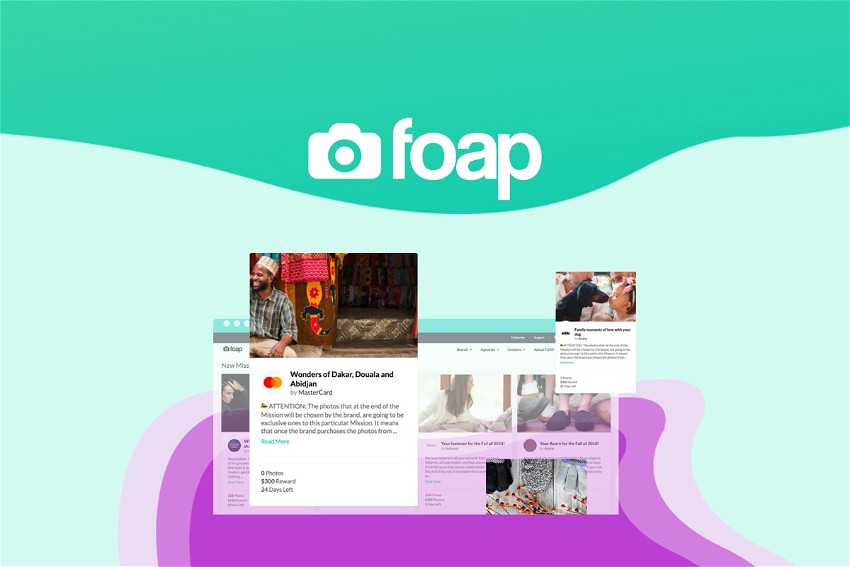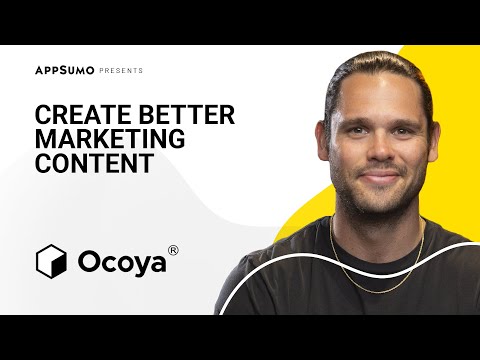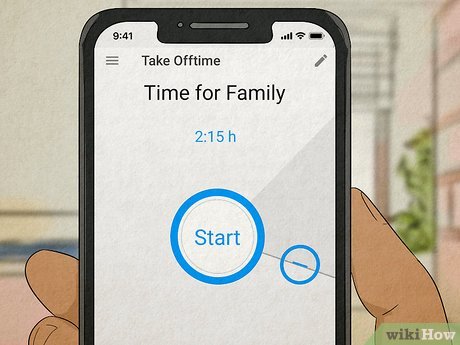Ocoya is a social media optimization tool that can help you save time and improve your social media posts. Here are 5 key strategies for using Ocoya to optimize your social media posts:
1. Schedule your posts in advance: Ocoya allows you to schedule your posts ahead of time, so you can plan and space out your content more effectively.
This can help you avoid last-minute scrambling and ensure that your content is well-timed and relevant.
2. Use the bulk edit feature: The bulk edit feature on Ocoya lets you make changes to multiple posts at once, which can be a huge time saver when you need to update or change something in your post.
3. Take advantage of post templates: Ocoya comes with a variety of post templates that you can use to quickly create new posts without starting from scratch each time.
This can be a great way to save time and maintain consistency in your content.
4. Use hashtags wisely: Hashtags are a great way to reach new audiences and get more exposure for your content. However, using too many hashtags or irrelevant hashtags can actually hurt your chances of being seen by potential followers.
When using hashtags, be sure to use them sparingly and only use relevant ones that will help boost the visibility of your content.
5. Monitor your analytics: Ocoya provides detailed analytics for each of your posts, so you can see how they’re performing and make necessary adjustments accordingly.
Are you looking to optimize your social media posts? If so, Ocoya has 5 key strategies that can help.
1. Keep it short and sweet: People are more likely to engage with a post that is brief and to the point.
2. Use images: Posts with images are more likely to be shared and engaged with than those without.
3. Use hashtags: Hashtags can help increase the reach of your posts and make them easier for people to find. Just be sure not to use too many!
4. Post at peak times: Timing is everything when it comes to social media. Make sure you’re posting when your audience is most active for maximum engagement.
5. Try different types of content: Mix things up by posting different types of content, such as videos, infographics, or quizzes.
This will keep people coming back for more!
9 AI Social Media Marketing Tools 2023 | Content Creation, Automation, Competitor Analysis & More
What are the 5 Steps to Creating a Social Media Strategy?
Are you looking to create a social media strategy but don’t know where to start? There are a lot of different factors to consider when crafting your strategy, but if you break it down into small, manageable steps, the process becomes much more straightforward. Here are the five essential steps for creating an effective social media strategy:
1. Define Your Goals
The first step is to determine what you want to achieve with your social media presence. Do you want to increase brand awareness?
Drive traffic to your website? Generate leads? Once you know what your goals are, you can begin tailoring your content and strategies accordingly.
2. Know Your Audience
Who is your target market? What kinds of things are they interested in?
What motivates them? When you understand who your audience is, it becomes much easier to produce content that resonates with them. Keep in mind that different demographic groups may use different social networks, so it’s important to have a presence on the platforms where your target market is most active.
3. Create Engaging Content
Now that you know what kind of content will resonate with your audience, it’s time to start creating it! Post regularly and mix up the types of content you share to keep things interesting.
In addition to promoting your own products or services, share relevant industry news, helpful tips or anything else that would be of interest to your followers. And don’t forget about visuals – posts with images tend to perform better than those without.
What are the 5 Elements of Media Strategy?
In order to create an effective media strategy, there are five key elements that need to be considered:
1. Target audience: Who is your target audience? What are their demographics? What are their interests? Knowing who you want to reach with your message is the first step in creating an effective media strategy.
2. Goals: What do you hope to achieve with your media campaign? Are you looking to increase brand awareness, generate leads, or drive sales? Be specific about what you want to accomplish so you can measure the success of your campaign.
3. Message: What is the main message you want to communicate to your target audience? Make sure it is clear and concise so that it can be easily understood.
4. Media mix: Which channels will you use to reach your target audience? Will you use paid advertising, social media, email marketing, or a combination of several different channels? Choose the channels that will work best for reaching your specific target audience.
5. Budget: How much money are you willing to spend on your media campaign? Keep in mind that some channels may require a larger budget than others.
Plan accordingly and allocate enough funds so that you can execute your plan effectively.
What are the 5 Principles of Social Media?
It’s no secret that social media has changed the way we communicate and connect with others. But what are the underlying principles that make social media so powerful? Here are 5 key principles of social media:
1. Social media is all about relationships. The most important principle of social media is that it’s all about relationships. Whether you’re connecting with friends, family, or customers, building strong relationships is essential to success on social media.
2. Social media is a two-way street. Another key principle of social media is that it’s a two-way street. That means you need to be just as interested in listening to what others have to say as you are in sharing your own thoughts and ideas.
Only by engaging in two-way communication can you build the trust and rapport necessary for strong relationships.
3. Social media is transparent. Because social media takes place online, it’s important to remember that everything you share is public and can be seen by anyone who visits your profile or page.
That’s why it’s crucial to be transparent about who you are and what you’re doing on social media. Honesty will help build trust with your audience and ensure they keep coming back for more honest engagement with you.
4 . Social Media Requires Consistency An important part of any successful relationship is consistency, something that also applies to social media interactions. When using various platforms such as Twitter, LinkedIn, Facebook, Google+, etc., people should get a consistent message from each site .
This not only helps create a cohesive brand image but also allows users easy access to information regardless of where they find themselves on the web. Inconsistent updates, on the other hand, give users whiplash as they try to figure out which company message they should believe.
5 Timing Is Everything In addition to being consistent with updates, paying attention to publishing times can make or break how successful those posts actually are. For example, studies show that the best time to tweet is between 1:00 p . m .and 3:00 p . m.
How Do You Optimize Social Media Posts?
If you want to optimize your social media posts, there are a few things you can do.
First, make sure you’re using the right keywords and hashtags. This will help people find your content more easily.
Second, post at the right time. Timing is everything when it comes to social media. If you post when most of your audience is online, you’ll get more engagement.
Finally, use high-quality visuals. People are more likely to engage with posts that contain images or videos. So, if you want to maximize your reach and engagement, pay attention to these three factors.

Credit: appsumo.com
Social Media Optimization Strategy
Are you looking to take your social media presence to the next level? If so, then you need a social media optimization (SMO) strategy. SMO is the process of optimizing your social media channels for increased engagement and reach.
By using SMO techniques, you can make your social media content more visible and accessible to potential customers and followers.
Here are some tips for creating an effective SMO strategy:
1. Use keywords in your social media content. Make sure to use relevant keywords in your posts and descriptions so that people can easily find your content when they search for it online. This will help improve your chances of being found by potential customers and followers.
2. Create shareable content. Ensure that your content is easy to share by using engaging headlines, images, and videos. Also, make sure to include share buttons on all of your web pages and blog posts so that people can easily share your content with their networks. Sharing is one of the key components of SMO, so make it easy for people to do it!
3. Promote special offers or discounts through social media. Take advantage of social media’s ability to spread word-of-mouth marketing by promoting any special offers or discounts that you may be running through your channels. Be sure to include a call-to-action so that people know how to take advantage of these deals!
4. Use analytics tools to track results. Keep track of how well your SMO efforts are performing by using analytics tools such as Google Analytics or Facebook Insights.
Social Media Optimization Examples
Social Media Optimization (SMO) is the process of using social media platforms and networks to generate publicity for a product, service or brand. SMO can be used to increase awareness of an organization, its products and/or services, generate sales leads or create a buzz around a particular topic.
There are many different ways to optimize social media, but some common methods include creating shareable content, using social media widgets and buttons, participating in online communities and groups relevant to your industry or target market, and monitoring social media conversations for opportunities to engage.
Some examples of successful social media optimization campaigns include: – The ALS Ice Bucket Challenge: This campaign went viral on Facebook, Twitter and other social platforms, raising over $100 million for the ALS Association. Participants shared videos of themselves dumping buckets of ice water on their heads, then challenged others to do the same within 24 hours or donate to the cause.
– Oreo’s Super Bowl Blackout Tweet: When the power went out at the Super Bowl in 2013, Oreo quickly tweeted a graphic that said “You can still dunk in the dark.” The tweet was retweeted over 10,000 times and received widespread news coverage. – #nomakeupselfie: This 2014 campaign encouraged women (and men) to post selfies without makeup to raise awareness for cancer charities.
Social Media Optimization Tools
There are a number of social media optimization (SMO) tools available to help businesses improve their online presence and reach.
Here are some of the most popular SMO tools:
1. Hootsuite: This tool allows businesses to manage all their social media accounts in one place. It also provides users with powerful analytics so they can see how their social media campaigns are performing.
2. Sprout Social: Another great tool for managing multiple social media accounts and measuring campaign performance. Sprout Social also offers a suite of other features such as content creation and scheduling, team collaboration, and more.
3. Buffer: A simple, yet effective tool for posting updates to multiple social media accounts at once. Buffer also has a handy “Analytics” tab that shows users detailed information about their post-engagement levels.
4. CoSchedule: A comprehensive marketing calendar that helps businesses plan, publish, optimize, and measure all their content across different channels – including social media.
Social Media Optimization Checklist
It’s no secret that social media is a powerful tool for businesses. When used correctly, social media can help you reach new customers, build brand awareness, and drive sales. But with so many different platforms and strategies to choose from, it can be difficult to know where to start.
That’s why we’ve put together this social media optimization checklist to help you get the most out of your social media marketing efforts.
1. Define Your Goals Before you start posting randomly on social media, take a step back and think about what you want to achieve with your social media marketing.
Do you want to increase brand awareness? Drive traffic to your website? Generate leads?
Once you know what your goals are, you can create content and strategies that are more likely to help you achieve them.
2. Research Your Target Audience Who are you trying to reach with your social media marketing?
What platforms do they use most often? What kind of content do they respond best to? Answering these questions will help you determine where to focus your efforts and what type of content to create.
3. Create Compelling Content Your social media posts should be interesting, informative, or otherwise valuable enough that people will want to share them with their followers. If all of your posts are promotional in nature, chances are good that people will tune out pretty quickly. So mix things up!
Share blog articles, infographics, images, videos– anything that will capture attention and encourage sharing.
4. Use Relevant Hashtags: Hashtags can be a great way to reach new people who might be interested in your business or product but don’t yet follow you on social media. But beware– using too many hashtags or irrelevant hashtags can make you look spammy and turn off potential customers. So do some research beforehand and only use hashtags that are relevant to your business or post topic.
5. Engage With Other Users Social media is not a one-way street! In order for people to really connect with your brand on social media, you need to up the conversation by engaging with other users regularly –liking their posts, commenting on their updates, etc.. This will not only make people feel more connected to your brand but also show that you’re active on the platform and invested in building relationships.
Social Media Optimization Pdf
Social media optimization (SMO) is the process of improving the visibility and reach of a company or individual through social media channels. SMO can be used to improve the search engine optimization (SEO) of a website, as well as increase the overall online presence of a company or individual.
One way to think of SMO is as an extension of SEO; while SEO deals with optimizing a website for better search engine ranking, SMO focuses on making a website more visible and accessible through social media platforms.
In other words, SMO helps to get your content seen by more people and hopefully shared and liked by those people. There are many different ways to optimize your social media presence; some common methods include: – Creating shareable content: This could be anything from blog posts and infographics to videos and images.
The goal is to create content that people will want to share with their own networks. – Optimizing your profile pages: Make sure that your profile page on each platform (Facebook, Twitter, Google+, etc.) is complete and accurate, with links back to your website. Use keywords in your profiles so that people searching for you or your business can easily find you.
– Connecting with influencers: Influencers are people with large followings on social media; if they share your content, it can reach a much wider audience. Try reaching out to influencers in your industry or field and see if they’re interested in sharing your content with their followers.
Importance of Social Media Optimization
In today’s world, social media is one of the most important tools for marketing and promoting your business. It is essential to have a strong social media presence in order to reach new customers and grow your brand. Social media optimization (SMO) is the process of improving your social media presence in order to achieve these goals.
There are many benefits of SMO, including:
1. Increasing brand awareness and reach
2. Driving traffic to your website or blog
3. Generating leads and sales
4. Building relationships with customers and prospects
5. Enhancing customer service
6. Increasing SEO rankings 7. And more!
Social Media Optimization in Digital Marketing
Digital marketing is the process of promoting a brand or product through digital channels, such as social media, email, and search engines. Social media optimization (SMO) is the process of using social media to drive traffic and engagement with your brand or product. There are a number of ways to optimize your social media presence, including:
1. Creating shareable content: Content that is interesting, informative, and visually appealing is more likely to be shared by users on social media. Make sure your content strategy takes into account what kinds of content are most likely to be shared by your target audience.
2. Using keywords and hashtags: Use relevant keywords and hashtags in your posts to make them more discoverable by users searching for those terms on social media.
Hashtags can also be used to start or join conversations about topics related to your brand or product.
3. Posting at optimal times: Different types of content perform better at different times of day on different platforms. Experiment with posting times and days to find the best results for your particular content and audience.
4. Engaging with users: Responding to comments and questions left by users shows that you are listening and care about what they have to say.
Digital Media Optimization
Digital media optimization is the process of improving the quality and delivery of digital media content. This can be done through a variety of means, including file compression, format conversion, and bitrate reduction. By optimizing digital media files, businesses can improve their overall workflow and save time and money.
Conclusion
Are you looking to optimize your social media posts? If so, here are five key strategies from Ocoya that can help:
1. Use keywords and hashtags strategically. This will help ensure that your content is seen by the right people.
2. Make use of images and videos. People are more likely to engage with posts that contain visual elements.
3. Keep your posts short and sweet. Longer posts tend to get less engagement than shorter ones.
4. Timing is everything. Make sure you’re posting at times when your audience is most active on social media.



